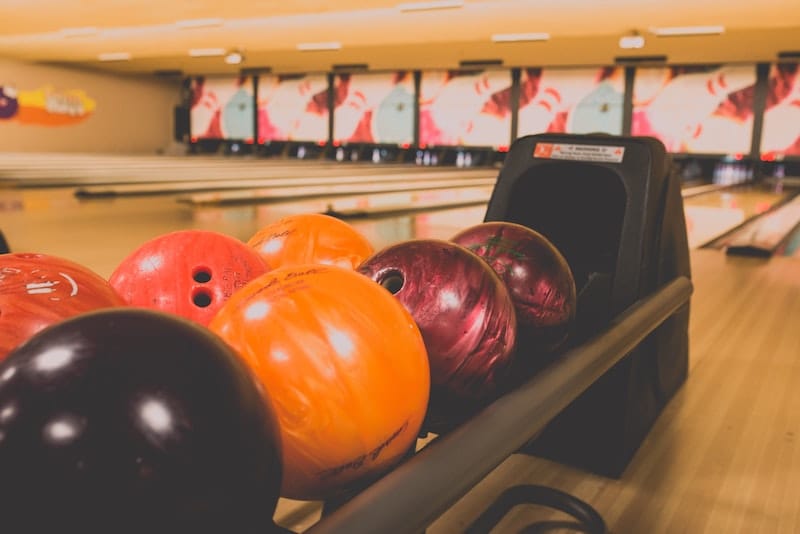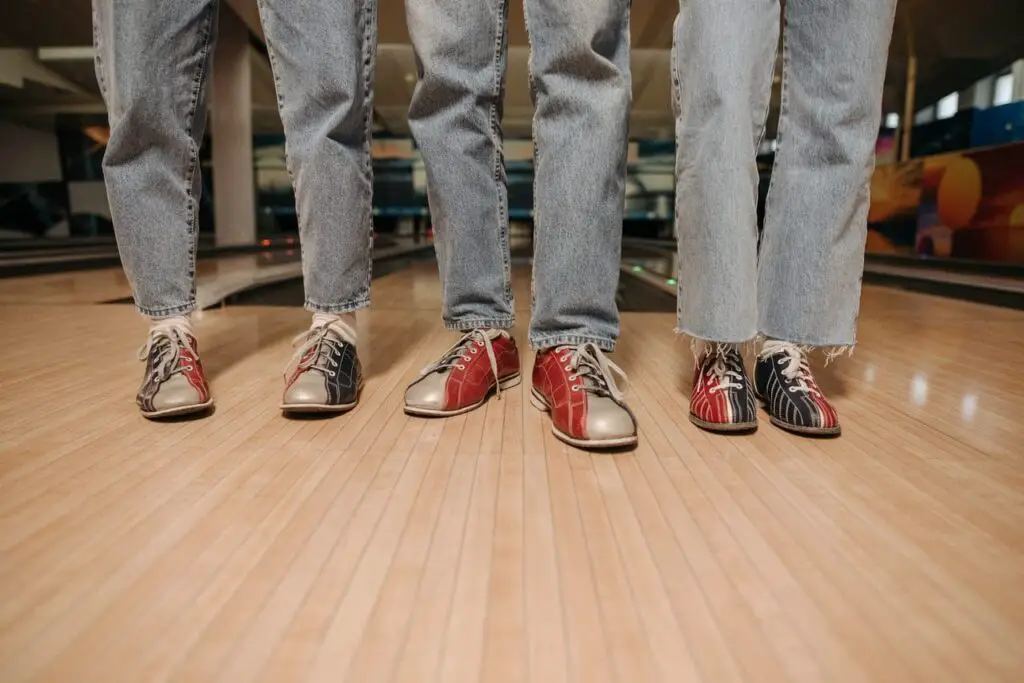Bowling is a popular sport enjoyed by people of all ages. Although it is generally considered a low-impact activity, improper techniques and equipment can lead to injuries. In this comprehensive guide, we will discuss the most common bowling injuries, prevention techniques, and rehabilitation methods. Understanding the factors that lead to injuries can help bowlers take the necessary steps to minimize their risks. By following recommended techniques, equipment adjustments, warming up and stretching before bowling, and consulting with healthcare professionals, bowlers can prevent injuries and enjoy this engaging sport without any setbacks.
5 Common Bowling Injuries
- Wrist Injuries: Bowling requires repetitive wrist motions, which can lead to strains, sprains, and even fractures. Overuse and incorrect technique can contribute to these injuries
- Finger Injuries: Gripping the ball improperly or using a ball that is too heavy can cause injuries to the fingers, such as sprains, strains, and tendon damage
- Elbow Injuries: The repetitive motion of bowling can cause overuse injuries to the elbow, such as tendinitis or lateral epicondylitis (also known as “bowler’s elbow”)
- Shoulder Injuries: The shoulder is involved in the forceful swinging motion while bowling, making it susceptible to rotator cuff injuries, strains, and dislocations
- Knee Injuries: The sliding motion and sudden stops during the approach can put stress on the knees, causing injuries like ligament strains, meniscus tears, and patellar tendinitis
Common Mistakes That Lead to Injuries
Improper Grip
An improper grip on the bowling ball is a common cause of injury. A grip that is too tight can lead to wrist strain and finger injuries, while a grip that is too loose can cause the ball to slip, leading to finger and elbow injuries. To avoid these issues, it is essential to learn and maintain a relaxed grip that allows you to control the ball better and reduces pressure on your fingers and wrist.
Using Balls That Are Too Heavy
Bowling balls come in a range of weights, typically from 6 to 16 pounds. Using a ball that is too heavy for you can increase the risk of wrist and elbow injuries. When selecting a bowling ball, choose a weight that is manageable for you and allows you to maintain a proper grip and form. A general rule of thumb is to select a ball that weighs about 10% of your body weight, up to a maximum of 16 pounds.
Inappropriate Footwork
Poor balance and footwork can lead to back injuries and other problems in the bowling approach. Bowlers should focus on maintaining proper alignment, taking moderate strides, and ensuring a smooth and controlled slide during the approach. Avoid taking excessively long strides, rushing the approach, or twisting your body in an unnatural way, as these actions can lead to injury.
Incorrect Bowling Techniques
Using incorrect bowling techniques, such as a lack of follow-through or improper release, can contribute to injuries. To prevent injury, it is crucial to learn and practice proper bowling techniques from a qualified coach or instructor. This can help you develop a smooth and controlled motion that minimizes the risk of injury while improving your overall performance on the lanes.
Understanding these common bowling injuries and significantly reduce your risk of injury and enjoy a safer and more enjoyable bowling experience.
In the following chapters, we will discuss specific prevention techniques and equipment choices that can further minimize the risk of bowling injuries.
Equipment and Adjustments for Injury Prevention
Choosing the Right Bowling Ball
Selecting the right bowling ball is crucial for preventing injuries. Consider the following factors when choosing a ball:
- Weight: As mentioned earlier, choose a ball that is approximately 10% of your body weight, up to a maximum of 16 pounds. If you are between two weights, it is generally better to select the lighter ball.
- Fitting: Ensure that the ball’s finger holes fit comfortably and snugly, without causing any discomfort or strain. A professional at a bowling pro shop can help you find the perfect fit.
- Material: Bowling balls are typically made of polyester, urethane, or reactive resin. Each material offers different performance characteristics, so choose a ball that suits your skill level and style of play.
Bowling Shoes
Investing in a good pair of bowling shoes can help prevent injuries caused by slipping or poor footwork. Make sure your shoes fit comfortably and provide adequate support and cushioning. Bowling shoes have specially designed soles that allow for a smooth slide during the approach. Always wear bowling shoes on the lanes, as regular street shoes can damage the approach and create hazardous conditions.
Wrist Supports and Accessories
Wrist supports can provide additional stability and help maintain proper wrist positioning during the approach and release. Consult a coach or professional to determine if wrist supports are appropriate for you. Other accessories, such as finger inserts or thumb tape, can also help improve grip and comfort.
Warm-up, Stretching, and Conditioning
Warm-up
Before hitting the lanes, it is essential to warm up your body to prevent injuries. Start with a light cardiovascular activity, such as brisk walking or jogging, for 5 to 10 minutes. This will increase blood flow and prepare your muscles for bowling.
Stretching
Stretching is crucial for maintaining flexibility and reducing the risk of injury. Focus on stretching your major muscle groups, such as your shoulders, wrists, hips, and legs. Hold each stretch for 15-30 seconds, and remember to breathe while stretching. Avoid bouncing or forcing the stretch.
Strengthening Exercises
Incorporate strengthening exercises into your fitness routine to improve your overall bowling performance and reduce the risk of injury. Exercises that target the core, shoulders, and legs can be particularly beneficial for bowlers.
Some examples of strengthening exercises include:
- Planks: To strengthen your core, hold a plank position for 30 seconds, gradually increasing the duration over time.
- Shoulder Presses: Using dumbbells, perform shoulder presses to strengthen your shoulder muscles.
- Squats: Squats can help develop leg strength, which is crucial for maintaining balance and stability during the approach.
Integrating the warm-up, and conditioning tips into your bowling routine will not only enhance your performance but also decrease the risk of injuries.
In the subsequent chapters, we will explore rehabilitation methods for common bowling injuries and the importance of seeking professional advice for injury prevention and recovery.
Rehabilitation and Recovery from Bowling Injuries
RICE Method
For minor injuries, such as strains, sprains, or bruising, using the RICE method can promote healing and alleviate discomfort.
RICE stands for:
- Rest: Avoid any activities that may aggravate the injury, including bowling, until the pain subsides.
- Ice: Apply ice to the affected area for 20 minutes at a time, every 1-2 hours, during the first 48 hours after the injury.
- Compression: Use a compression bandage to help reduce swelling and provide support.
- Elevation: Keep the injured area elevated above the level of your heart when possible, particularly during the first 48 hours.
Physical Therapy
For more severe injuries or persistent pain, it is essential to consult a healthcare professional. They may recommend physical therapy, which can include manual therapy, therapeutic exercises, and modalities such as ultrasound or electrical stimulation, to facilitate recovery and restore function.
Return to Bowling
When returning to bowling after an injury, it is crucial to ease back into the sport gradually. Start with a lighter ball, a shorter approach, or fewer games, and gradually increase your intensity as your body adapts. Listen to your body and stop immediately if you experience pain or discomfort.
Seeking Professional Advice and Maintaining Bowling Fitness
Consult a Bowling Coach
Working with a bowling coach can help you refine your technique and minimize the risk of injury. A coach can identify any issues with your approach, release, or follow-through and provide guidance on how to correct them.
Periodic Health Check-ups
Regular health check-ups can help detect and address any underlying health issues that may contribute to bowling injuries. Discuss your bowling activities with your healthcare provider to ensure you are taking the appropriate precautions and maintaining your overall health.
Maintain Bowling Fitness
To prevent injuries and enhance your performance, it is essential to maintain your bowling fitness. Incorporate a balanced exercise routine that includes cardiovascular activities, strength training, and flexibility exercises. This will help you stay in peak physical condition and reduce the risk of injury on the lanes.
Choosing the right equipment, warming up and stretching properly, maintaining your overall fitness, and seeking professional guidance when needed, you can enjoy a long and fine bowling career.
Common questions about bowling injuries
Is bowling bad for your back?
Bowling is not inherently bad for your back. However, improper form or excessive play without proper conditioning and stretching can lead to back strain or more serious injuries. It’s important to use proper form, warm up before playing, and build up your core strength to protect your back.
Is bowling hard on your wrist?
Bowling can be hard on your wrist due to the repetitive motions and the weight of the bowling ball. Improper technique or using a ball that’s too heavy can lead to wrist strain or injury. Using wrist supports and ensuring you’re using a ball of appropriate weight can help protect your wrist.
Can bowling make you sore?
Yes, especially if you’re a new player or if you’ve been playing for a long time without rest. Bowling uses muscles that you might not typically use, and it can cause soreness. This is particularly true for muscles in the arm, shoulder, and back.
Can bowling cause back pain?
Yes, particularly if you use poor form or fail to use your legs and core muscles when bowling. Using only the upper body and back to deliver the ball can put unnecessary strain on the back muscles, leading to pain.
Is bowling bad for your knees?
Bowling involves a significant amount of knee bending and, in some cases, sliding. If done improperly, this can put strain on the knees. Using the correct form and wearing appropriate footwear can help prevent knee injuries.
Can you pull a muscle bowling?
Yes, it is possible to pull a muscle while bowling, particularly if you don’t warm up properly, use incorrect form, or overexert yourself. Commonly pulled muscles in bowling include those in the back, shoulder, or hamstring.
Is bowling hard on your angles?
Bowling can put strain on your ankles, particularly during the delivery phase where a bowler slides and then stops. This can be exacerbated by improper footwear or poor form. It’s important to use proper technique and wear appropriate bowling shoes to help protect your ankles.


